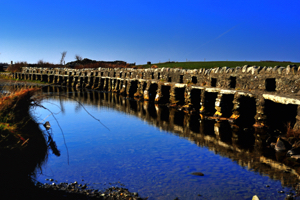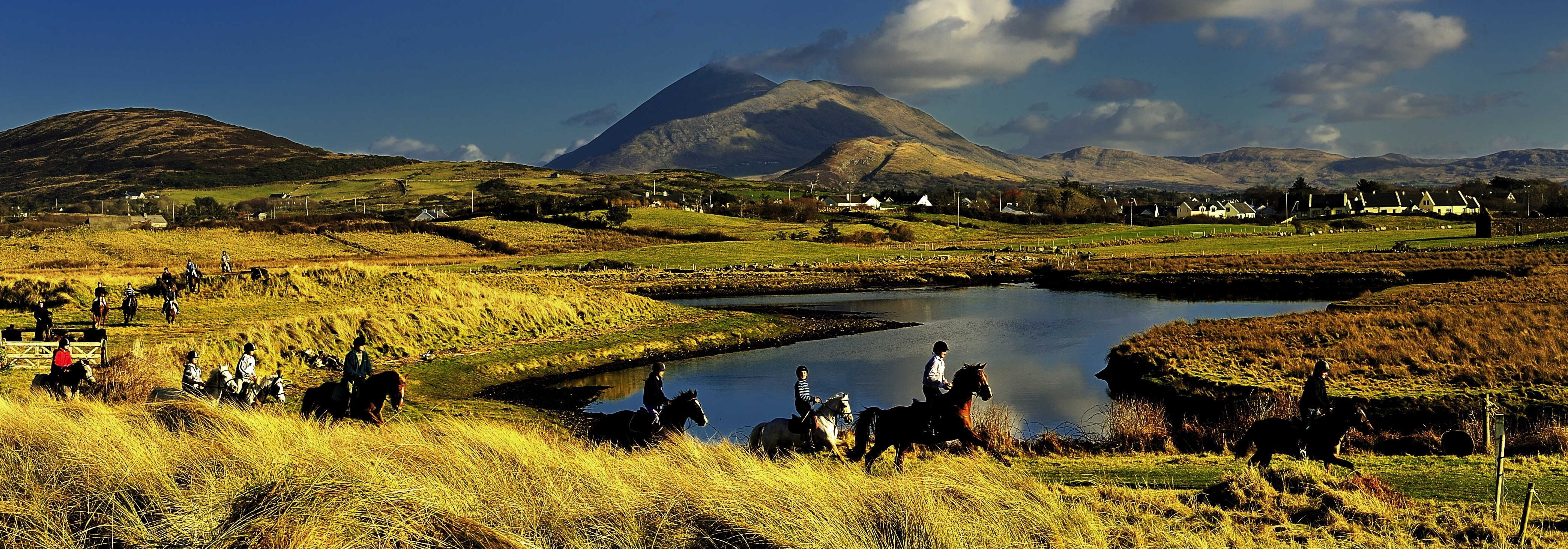There is a wealth of archaeological remains in the Louisburgh areaof County Mayo with evidence of human habitation going back 5000 years. Many of these are relatively undisturbed and can be viewed at ease.
Megalithic Tombs
There are two types of Megalithic Tombs - The Court Cairn and the Wedge Tomb.
The Court Cairn
Is made of large standing stones with corbelled roofing. It may contain one or more burial chambers. It is characterised by a court area at the entrance. Examples in the area are:
▪ "Leaba Dhiarmiada" at Aillemore - associated with tales of Diarmaid and Grainne, it is in a fair state of preservation and is accessible.
▪ Furmoyle - remains are scanty and are not easily accessible.
▪ Knockeen, - an anomalous site, thought to be a court cairn, the remains are considerable though much disturbed, easily accessible.
The Wedge Tomb (2000BC - 1800BC)
Is associated with the transition from the late Neolithic to the Bronze Age. They consisted of one burial chamber, often with small porticos and an anti-chamber. The front faces westwards and there is a decrease in width and height from back to front. Examples in the area are:
▪ Altoir, this monument was used as an altar where mass was celebrated during the penal times. Sited by the roadside it is in a good state of preservation.
▪ Feenone, very disturbed and difficult access.





Achaeology in the Louisburgh Killeen area
Louisburgh Killeen
Archaeology
Standing Stones
They are difficult to date as they seem to have originated in Neolithic times. In some cases they seem to mark burial grounds. Other purposes seem to be to mark boundaries, roadways, and sites of notable events. Certain stones were invested with a sacred character associated with cult ceremonies. They are called monoliths. There are a number of examples in the locality
▪ Killeen Churchyard
▪ Thallabawn
▪ Doughmakeon - This has an Ogham inscription now defaced (Ogham refers to the Irish Alphabet used on monuments 300A.D-700A.D.)
Stone Enclosures
These consist of an area enclosed by a circle of stones, and the best example is to be found at Devlin, which is easily accessible.
Ringforts
From the Iron Age these habitation sites are the most numerous field monument. They were homes of the Gaelic land-owning class until the adoption of the Norman tower house and were occupied as late as the 17th century. Circular in shape they are enclosed by one or more ramparts. Those with ramparts of earth are called 'rath' or 'lios', while those with stone ramparts are known as 'dun', cathair or caiseal. These are terms often used in place names. Ringforts sometimes contain an underground chamber. Examples in the area include
▪ Rath at Askillaun - well preserved and accessible.
▪ Two Cathairs at Durless
A variant of the ringfort is the Crannog or lake-dwelling sited on artificial platforms in lakes. There are examples at Cross Lough and Doolough.
Clapper Bridge
This is also a footbridge dating back to prehistoric times. It consists of arches constructed in the style, flat stones laid across stones. This is in a state of good preservation and is easily accessible.
By Bernie O'Malley, Louisburgh, County Mayo.




